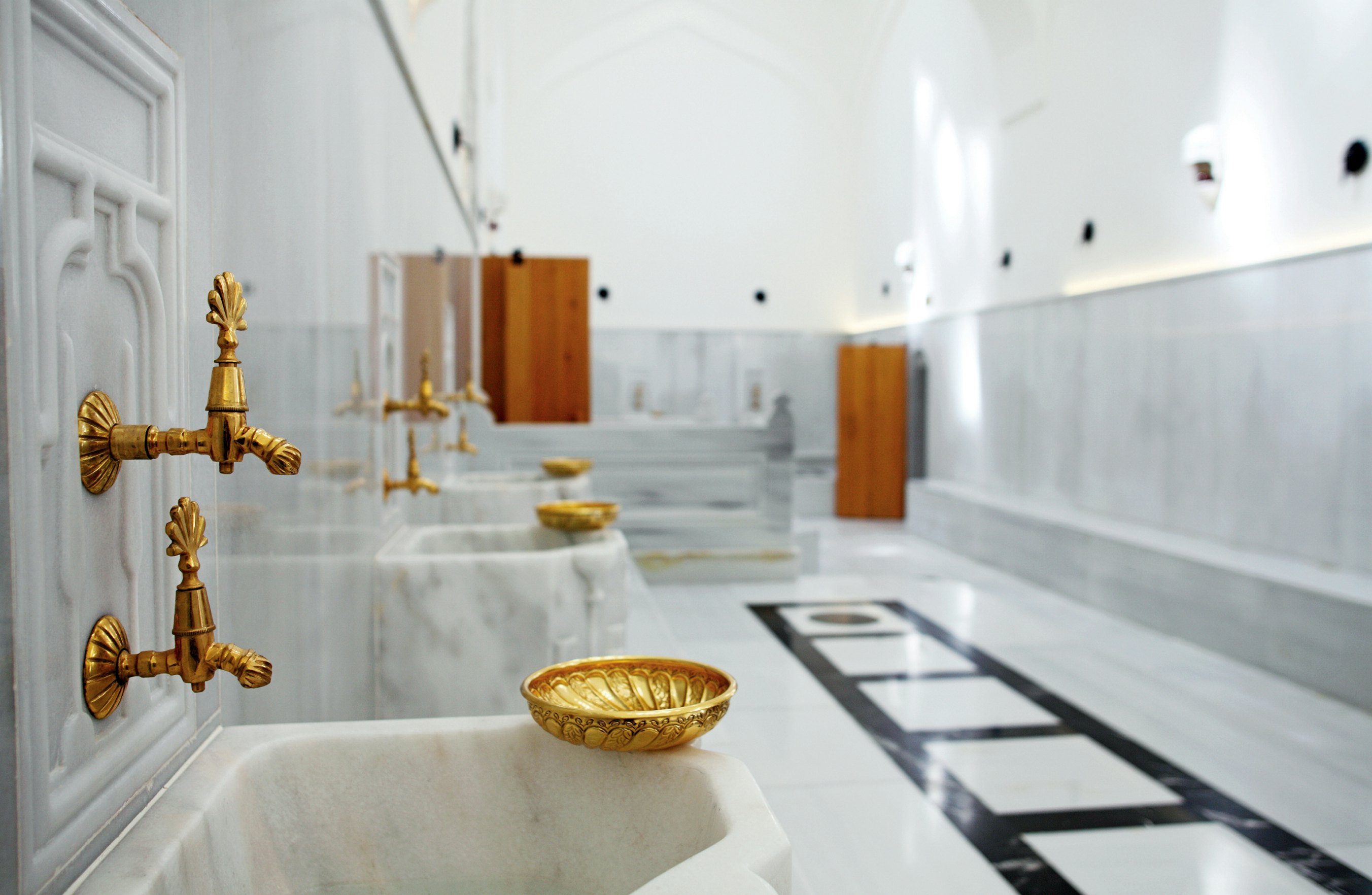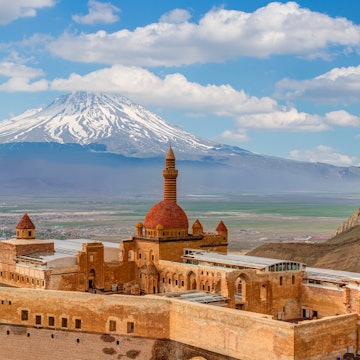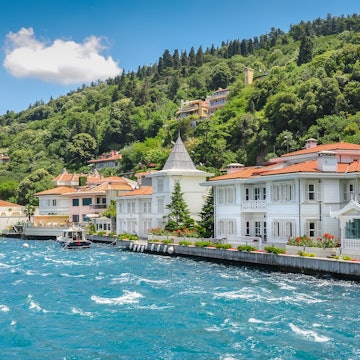

A traditional Turkish hamam. Alhim/Shutterstock
Going to a traditional bathhouse, known as a hamam, is a popular activity when visiting Türkiye. It's a great way to unwind after a long day of sightseeing in ever-bustling Istanbul and to experience a unique aspect of the local culture. But communal bathing can be a little intimidating if you don’t know what to expect – we've got you covered with this guide to the hamam experience.
Why do people go to a hamam?
Modeled after ancient Roman baths, hamams have been widespread across the Muslim world for centuries, serving as public facilities for washing in a time before private homes had indoor plumbing, as well as important spaces for (gender-segregated) socializing. Though they are no longer part of most people’s daily or weekly routine, hamam visits are still popular as part of wedding festivities and for special occasions. Other people go for the health benefits, which are reputed to include improved blood flow and skin texture, lower stress levels and muscle relaxation.

What does it look like inside a hamam?
Beyond the entrance area, the first section of a hamam is the cold room (soğukluk), which has changing areas and spaces to rest while you sip on tea, coffee, water or juice following your treatment. After getting ready, bathers pass through the warm room (ılıklık), where they can start adjusting to – or take a break from – the heat of the main hot room.
A domed central chamber, the hot room (sıcaklık) is typically heated to at least 40°C (104°F) with a high level of humidity. Inside the sıcaklık, marble benches and individual wash basins surround a central göbek taşı (navel stone), a raised marble platform where bathers are washed and scrubbed by hamam attendants.
How much does it cost to go to a hamam?
The price of going to a hamam varies widely, starting from around 600 Türk Lirası (TL) for entry and a basic massage at a neighborhood hamam to more than 3650TL for the same treatment at a luxury hamam. These are often historically notable baths that have been beautifully restored. Additional services can double the cost. A tip of around 10 percent for your attendant is expected.
Do I need to make a reservation for a hamam?
It’s a good idea to make a reservation for the best-known hamams frequented by travelers. At local hamams, it’s not generally necessary unless you’re planning to go as part of a large group.

What do I need to bring to a hamam?
Soap, shampoo, towels and footwear (wooden clogs or plastic slippers) are typically provided at a hamam, but you may bring your own if you wish. If you choose to wear underwear or a swim bottom – some bathers do, while others go naked under their peştamal, a thin towel provided for covering up – you’ll want to bring a dry pair to change into afterward. Hamams provide lockers for keeping your belongings safe while you bathe.
What services are available at a hamam?
The standard treatment is a kese-köpük massage, an exfoliating scrub with a coarse cloth (kese) followed by a vigorous massage with foaming soap (köpük). Larger hamams may offer longer massages, aromatherapy treatments, oil massages, face masks, foot rubs and other services for an additional fee, often in a private room alongside the main chamber.
How much time should I spend at a hamam?
The kese-köpük massage typically lasts 20–40 minutes and only takes place after the bather’s skin has softened and warmed up in the humid chamber. Including preparation and resting time, allow a minimum of 60–90 minutes for your hamam experience, though you may stay as long as you wish.

Are there any health considerations when going to a hamam?
Visitors who are pregnant or have cardiovascular disease, high or low blood pressure, diabetes or respiratory disease should not visit a hamam. It’s not recommended to go after drinking alcohol or on a completely full or empty stomach.
Which hamam should I go to in Istanbul?
The Kılıç Ali Paşa Hamam in Tophane, the Zeyrek Çinili Hamam in Fatih and the Hürrem Sultan Hamam in Sultanahmet are among the city’s most luxurious and architecturally stunning, with prices to match. The Cağaloğlu Hamam, also in Sultanahmet, is another top choice among travelers. For a more affordable experience with fewer frills, try the Çinili Hamam in Üsküdar or the Kadırga Hamam in Fatih.
Can I go to a hamam with my partner or child?
Almost all traditional hamams have either separate sections or separate bathing times for men and women, with attendants of the same gender. A scant few, such as the Süleymaniye Hamam next to the mosque of the same name, offer mixed bathing for couples. Many hamams allow children accompanied by an adult, although there may be a minimum age; check with the individual hamam before visiting as a family.

How can I learn more about hamams?
The free-entry Turkish Hamam Culture Museum, located inside a decommissioned 16th-century hamam in the Beyazıt neighborhood, offers a good overview of hamam architecture, history and traditional rituals. The Zeyrek Çinili Hamam has its own museum (admission 180TL), showing off a beautiful collection of hamam accessories from centuries past.
How can I bring the hamam experience back home with me?
Hamam accessories – including peştamal, kese, wooden clogs (called takunya or nalın) and the metal bowls (hamam tası) used for rinsing – are widely available across a broad price range in Istanbul’s bazaars, as are the olive oil soaps traditionally used for washing. Many hamams will have some of these items for sale on-site as well.
















